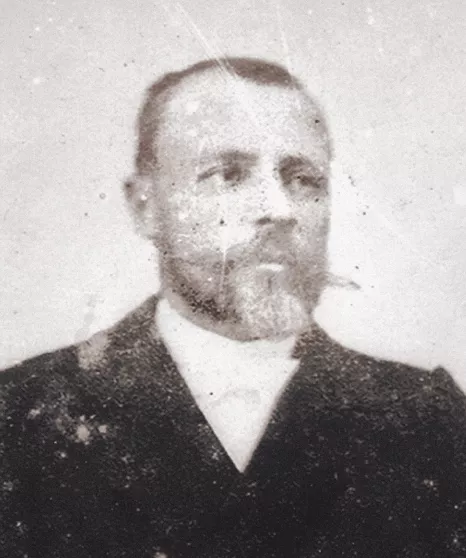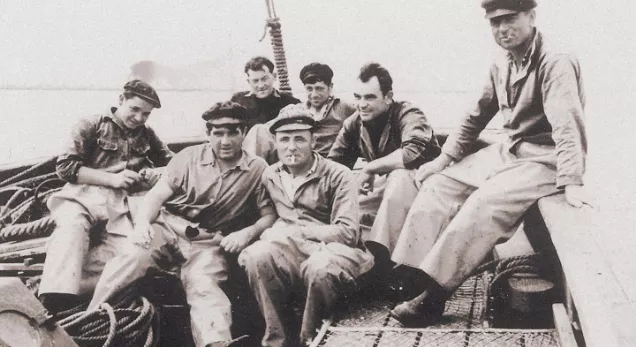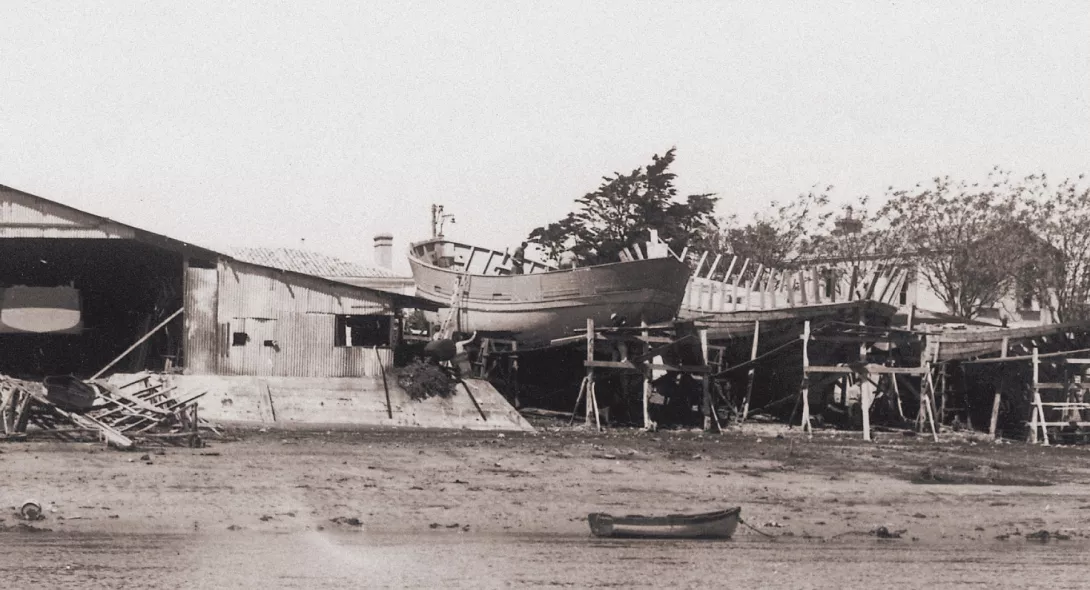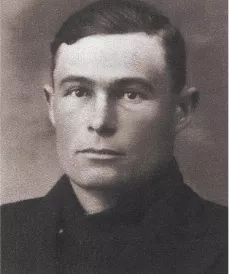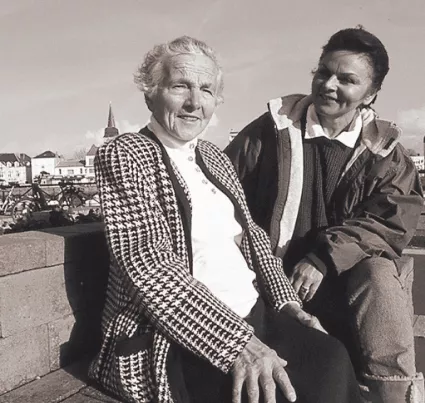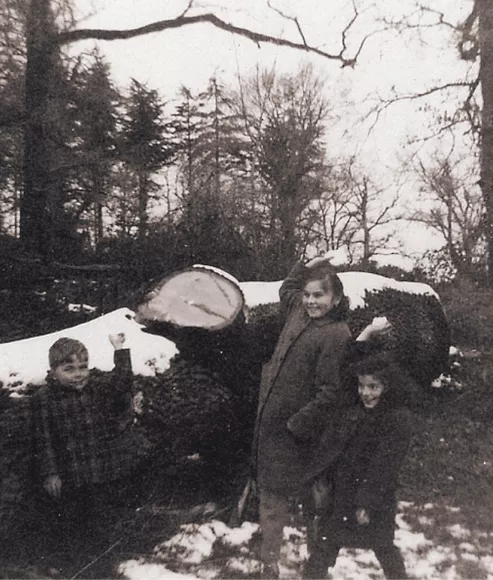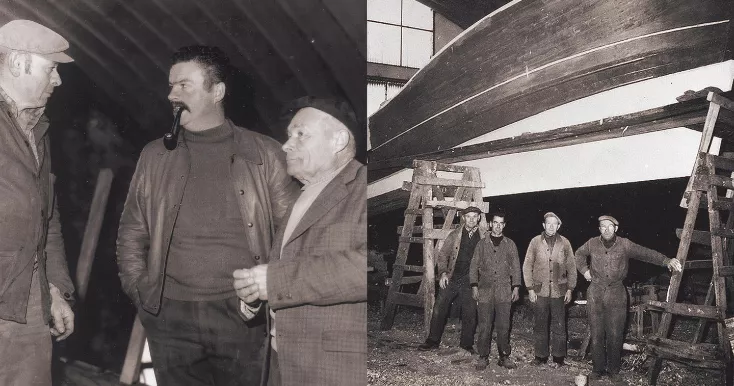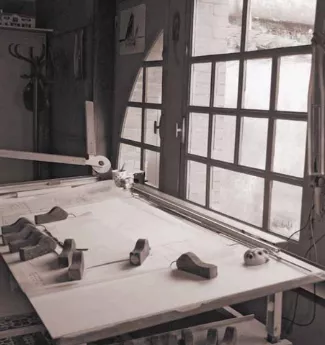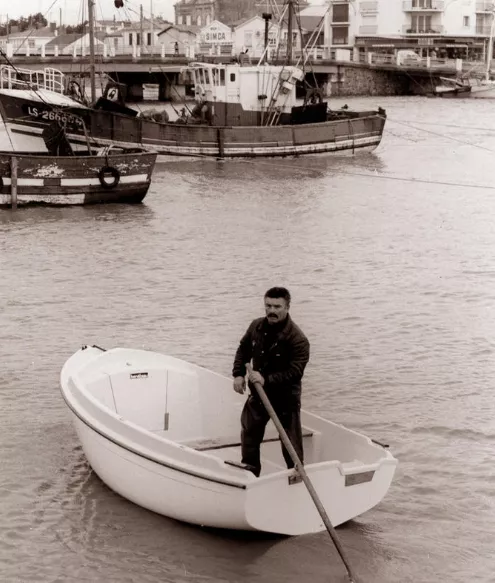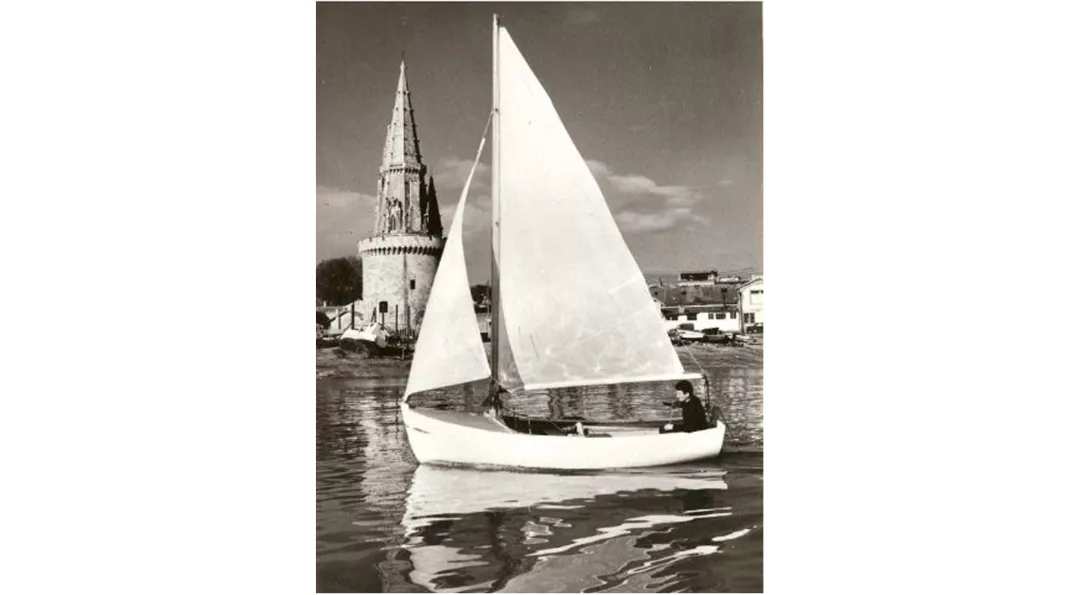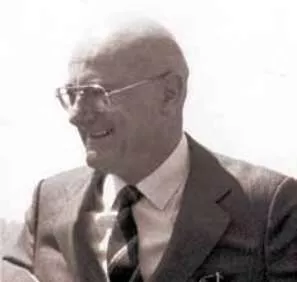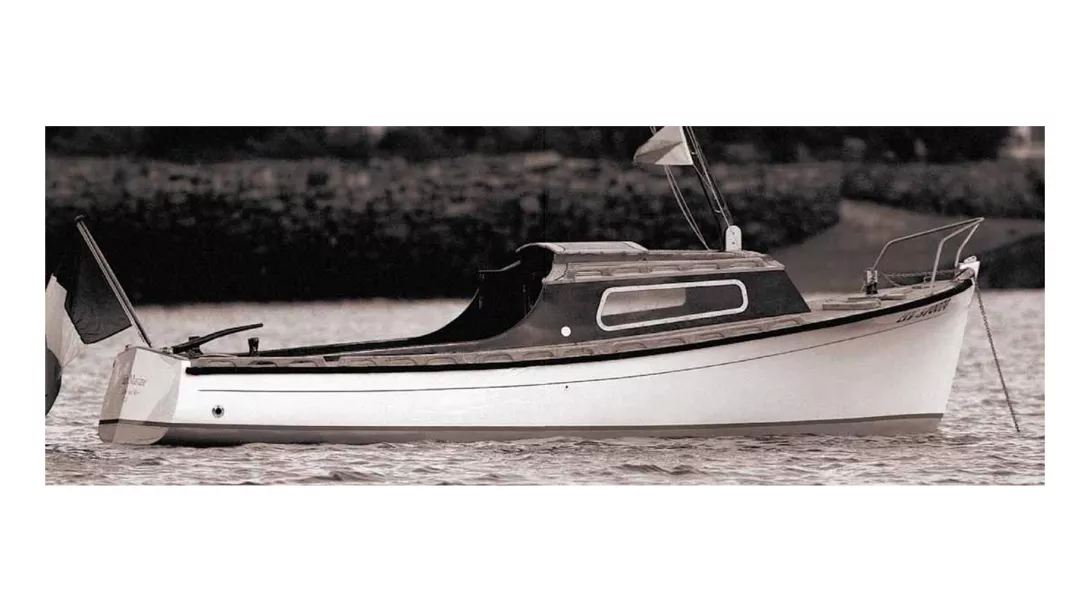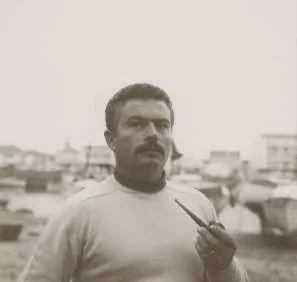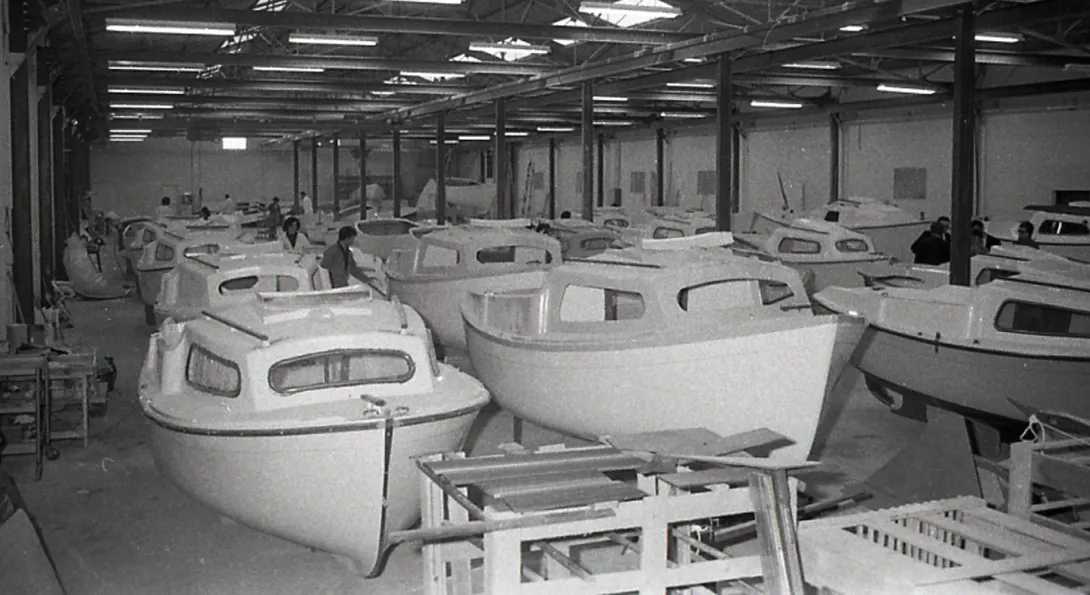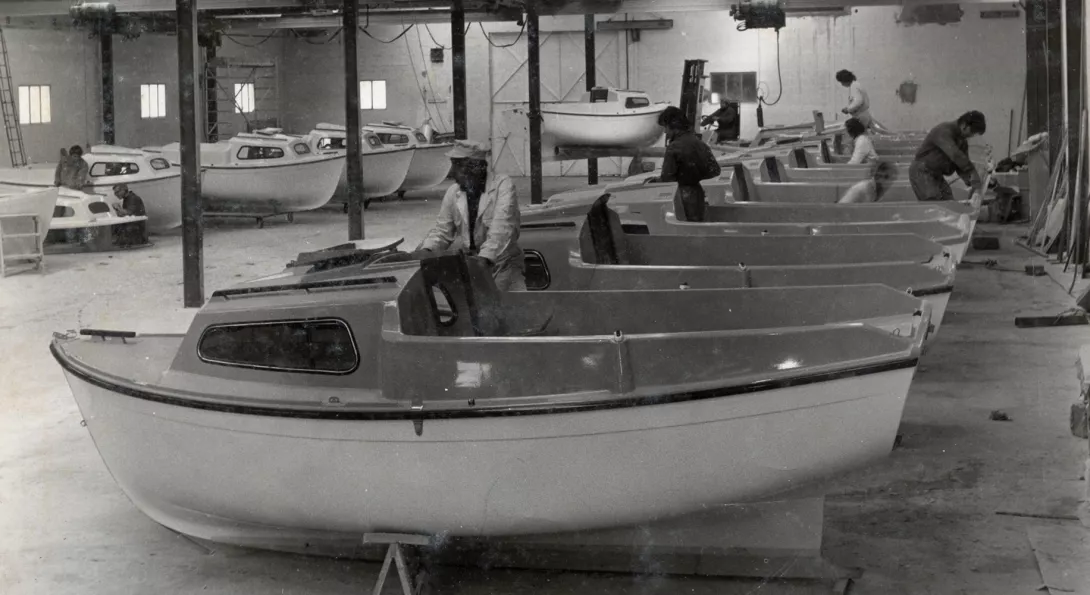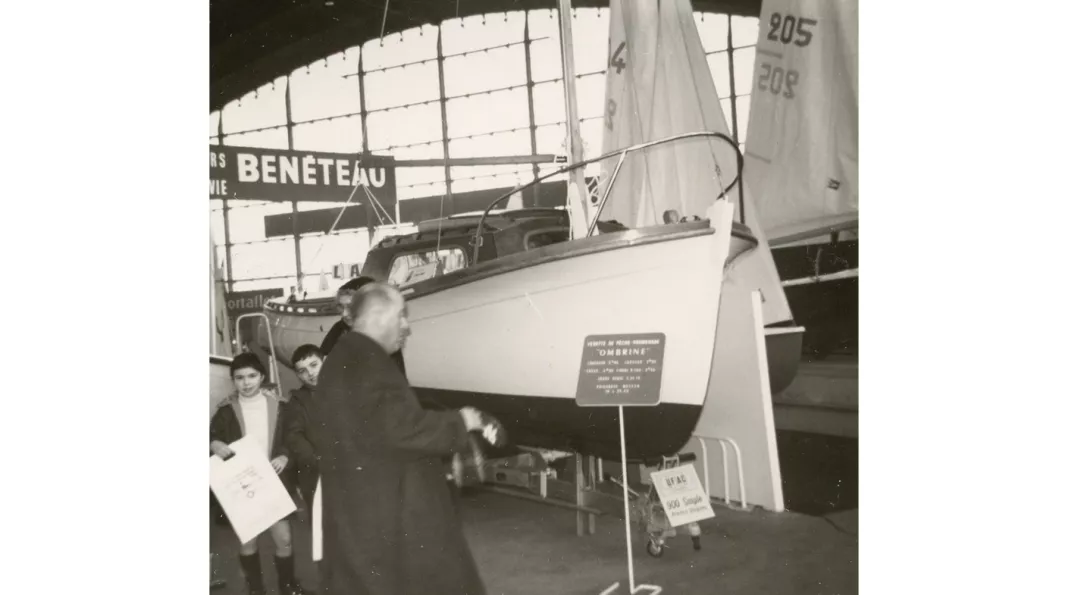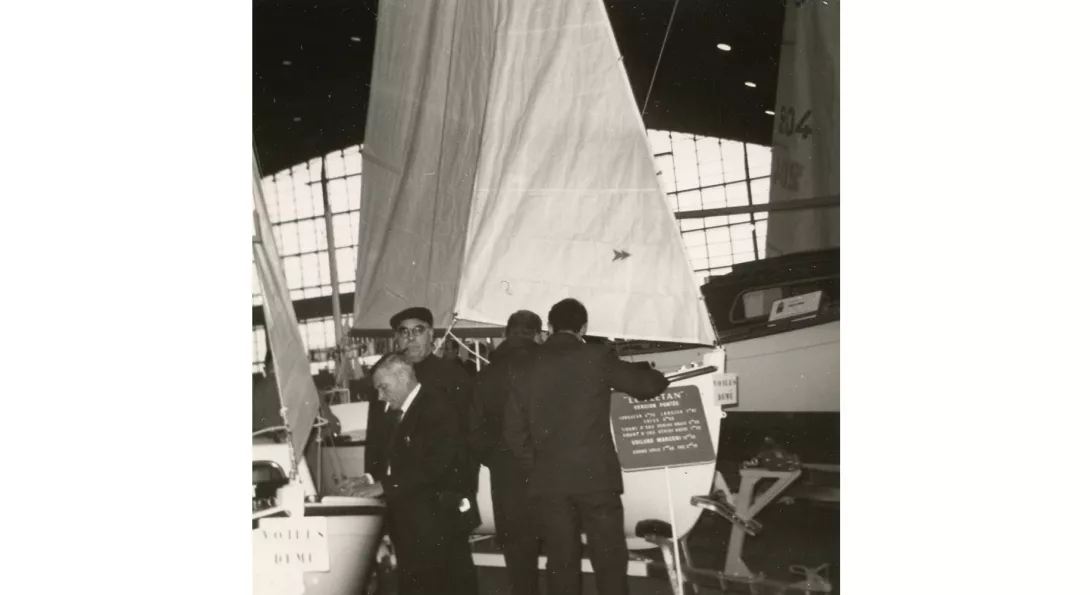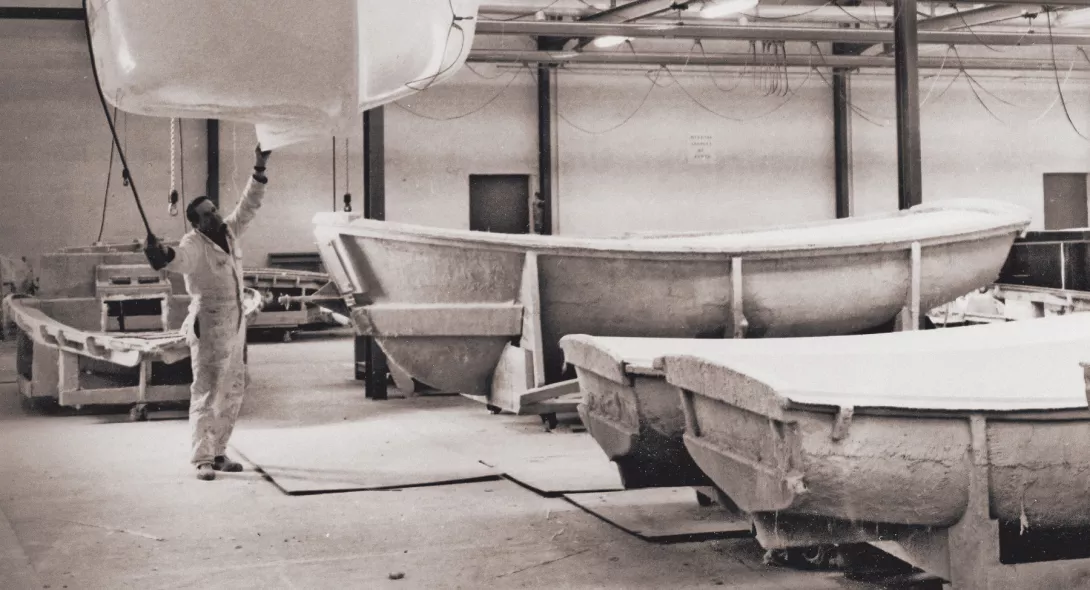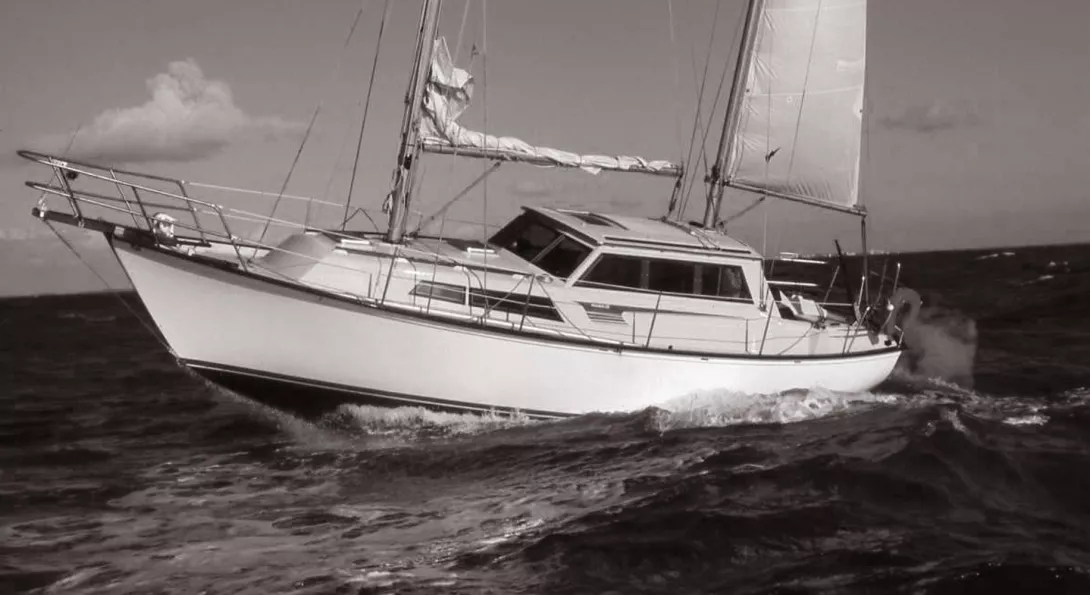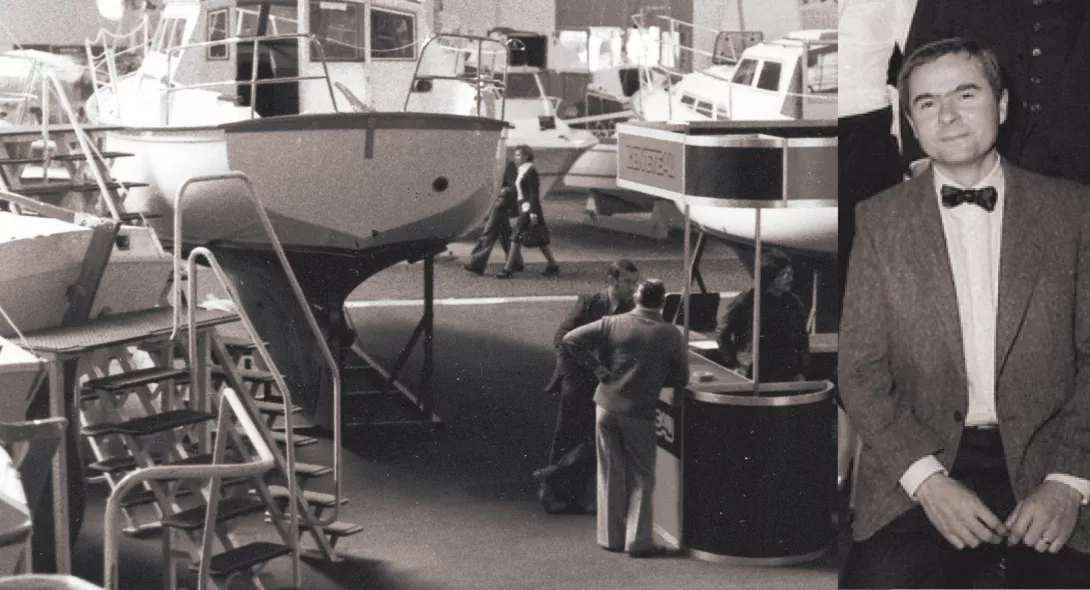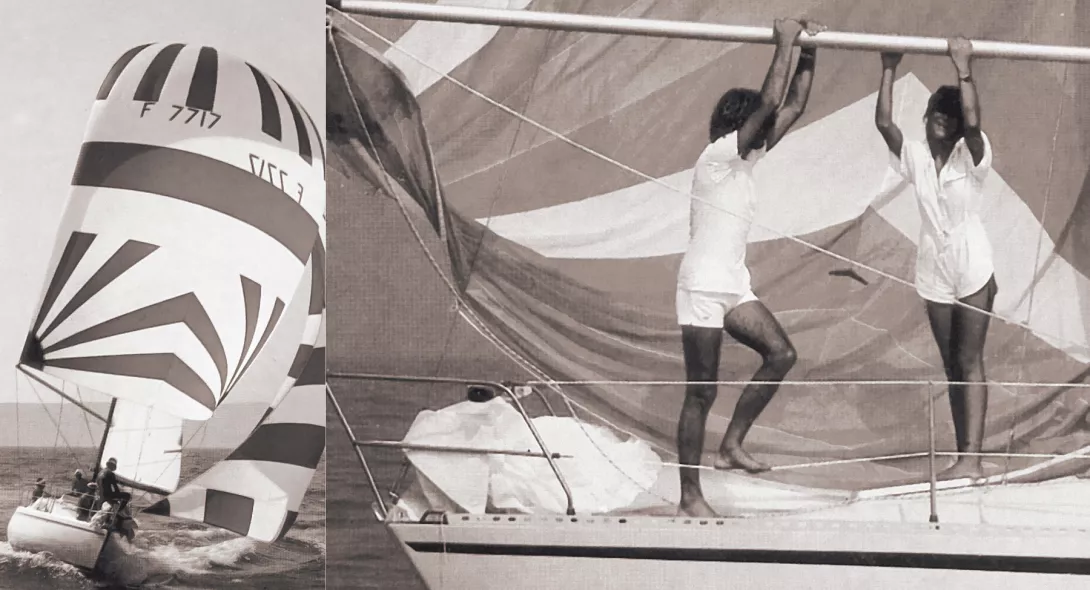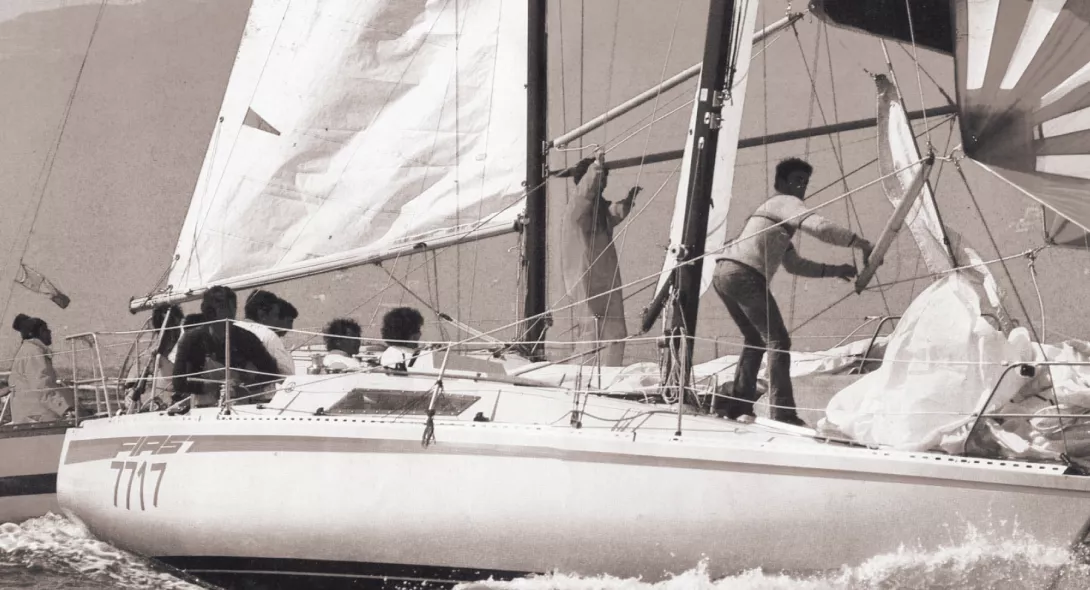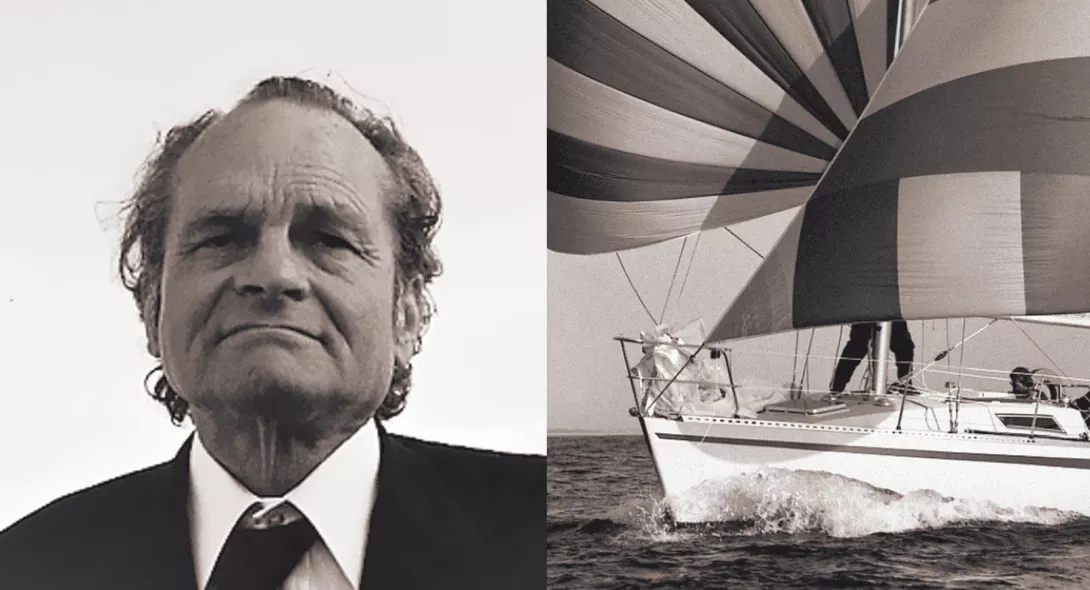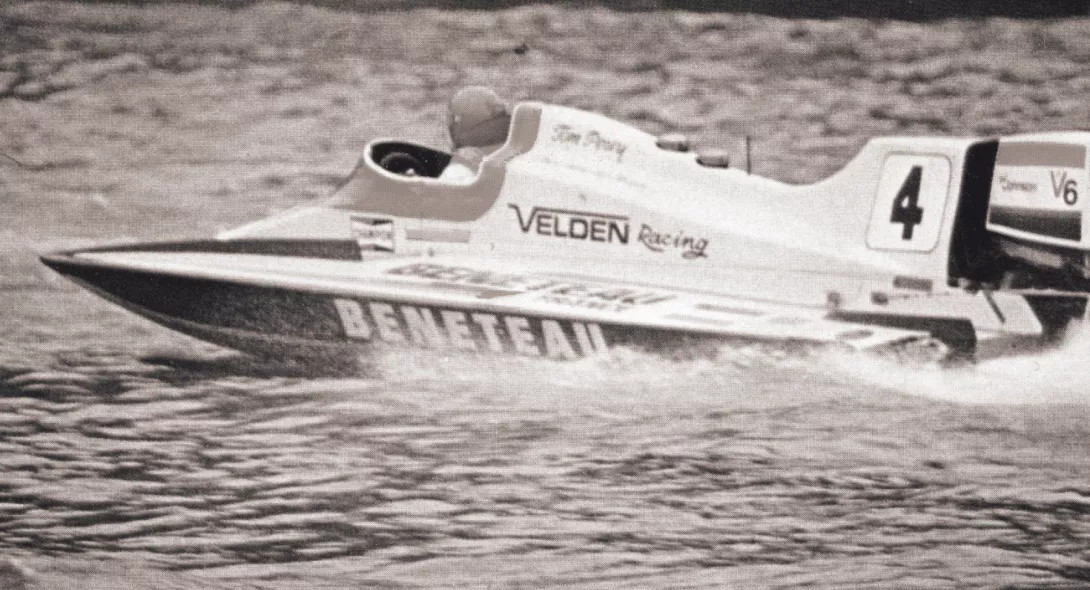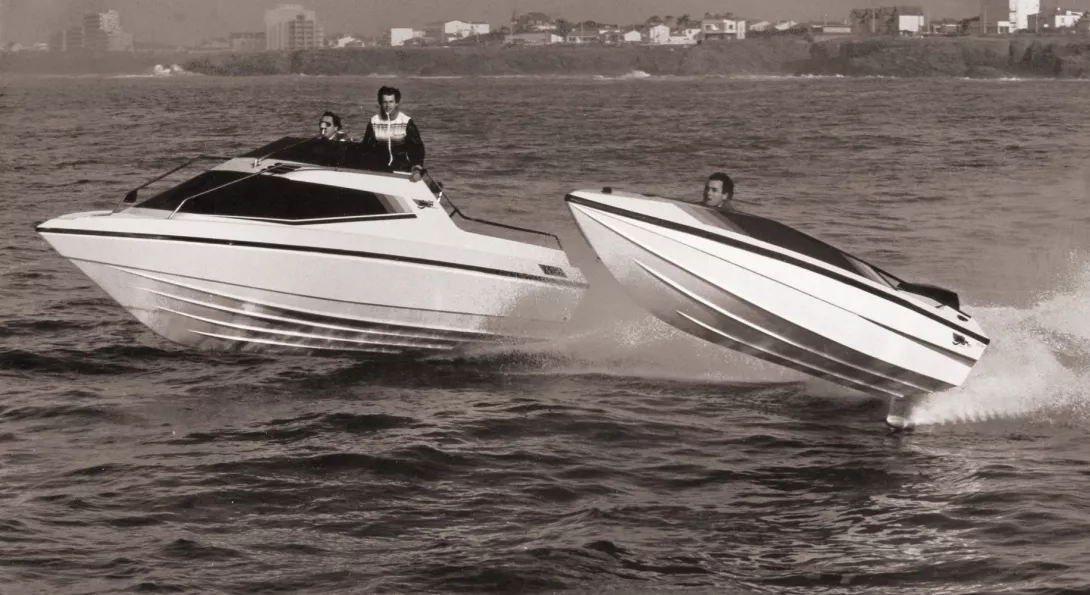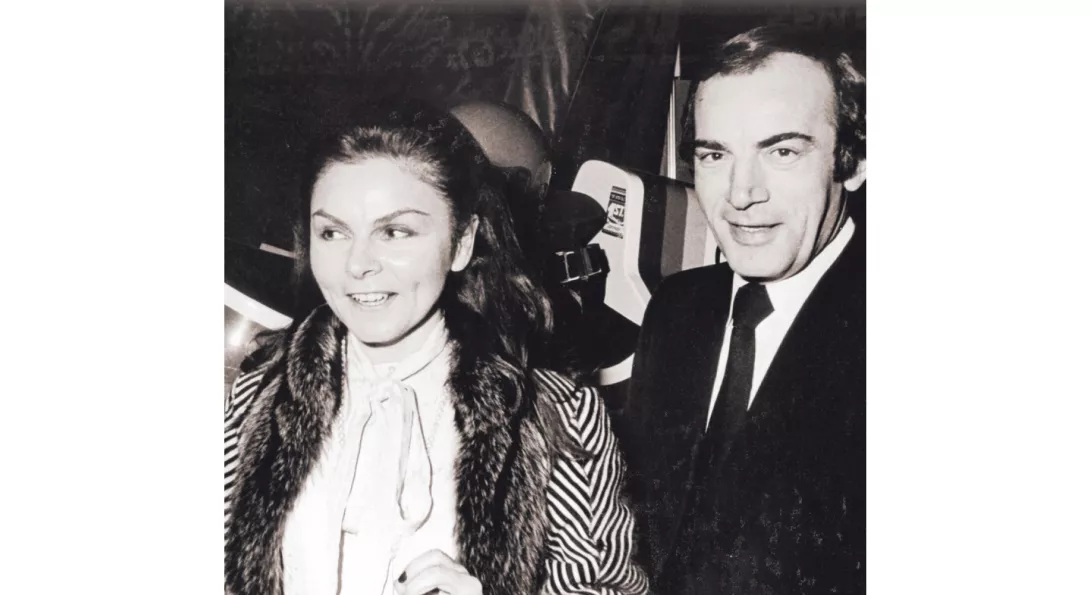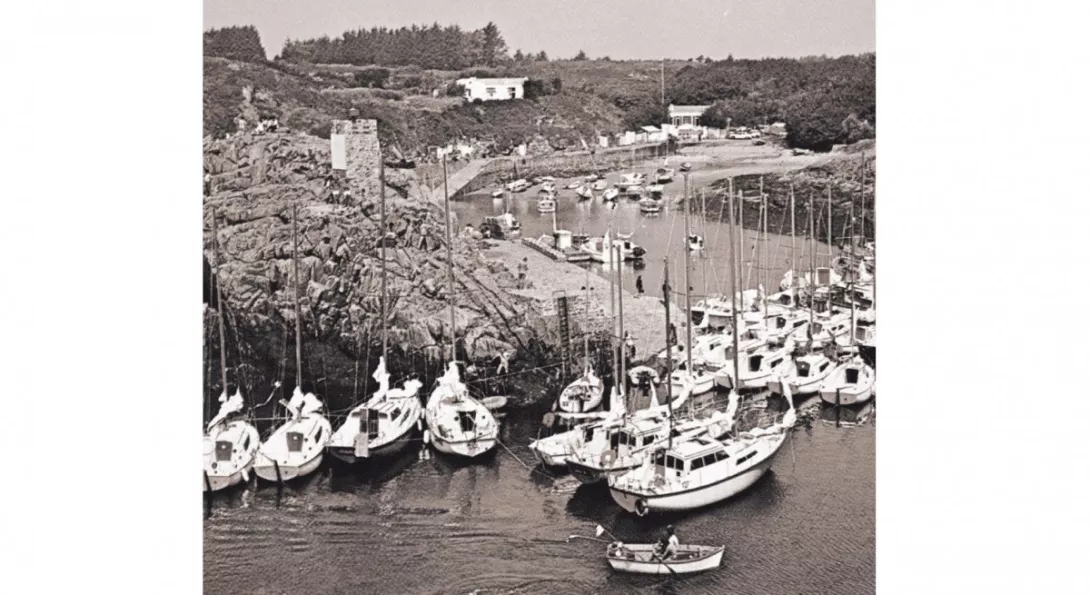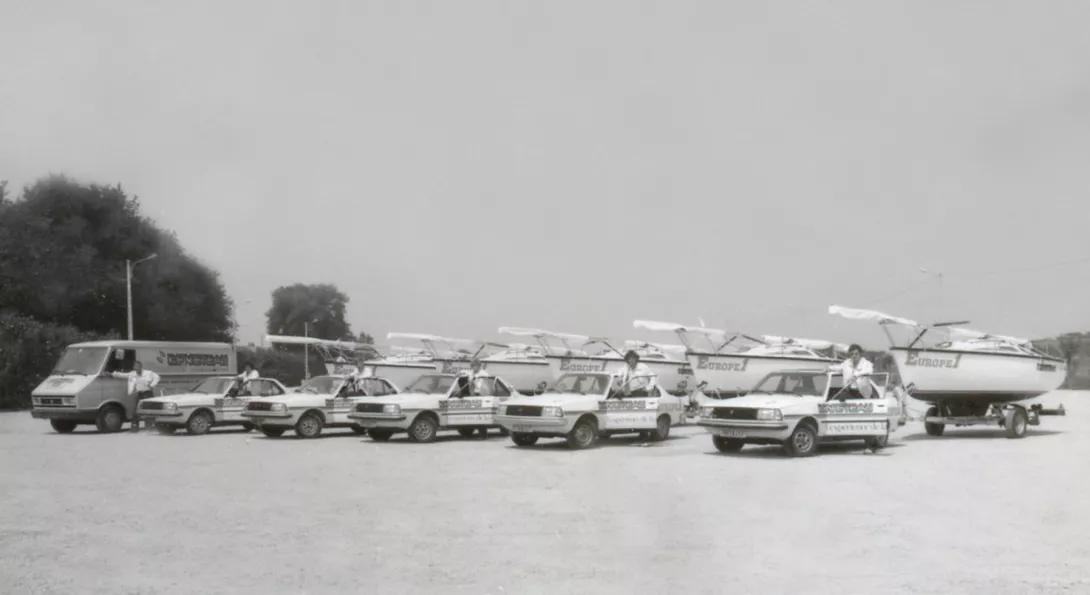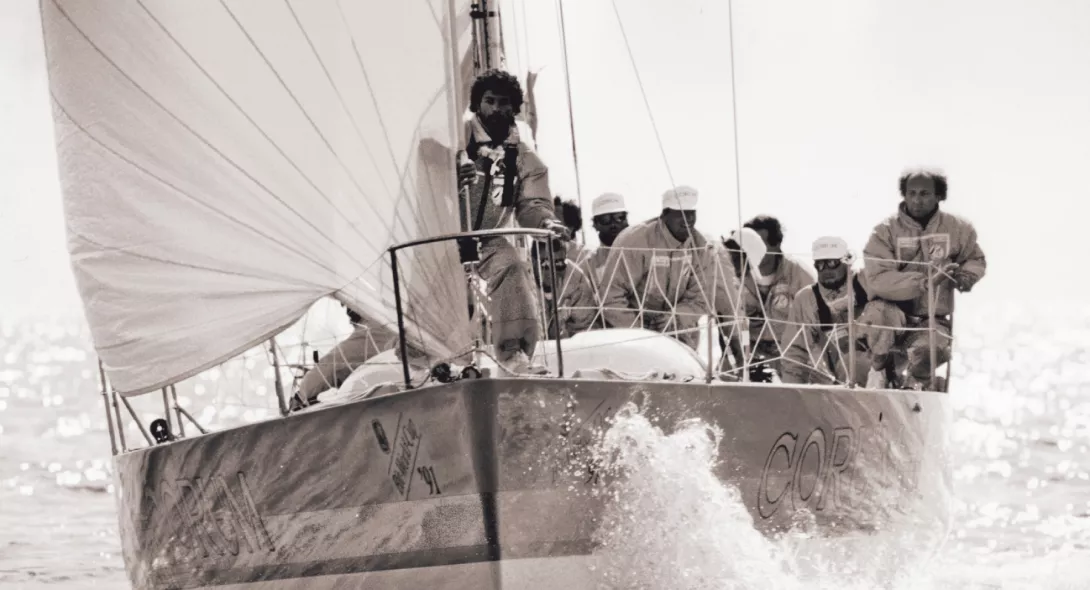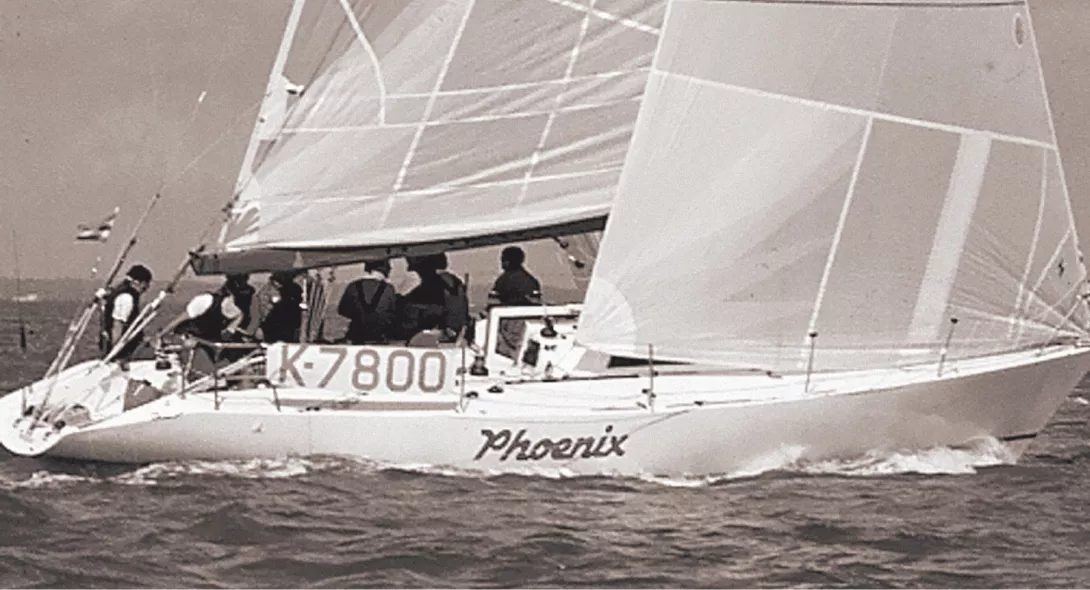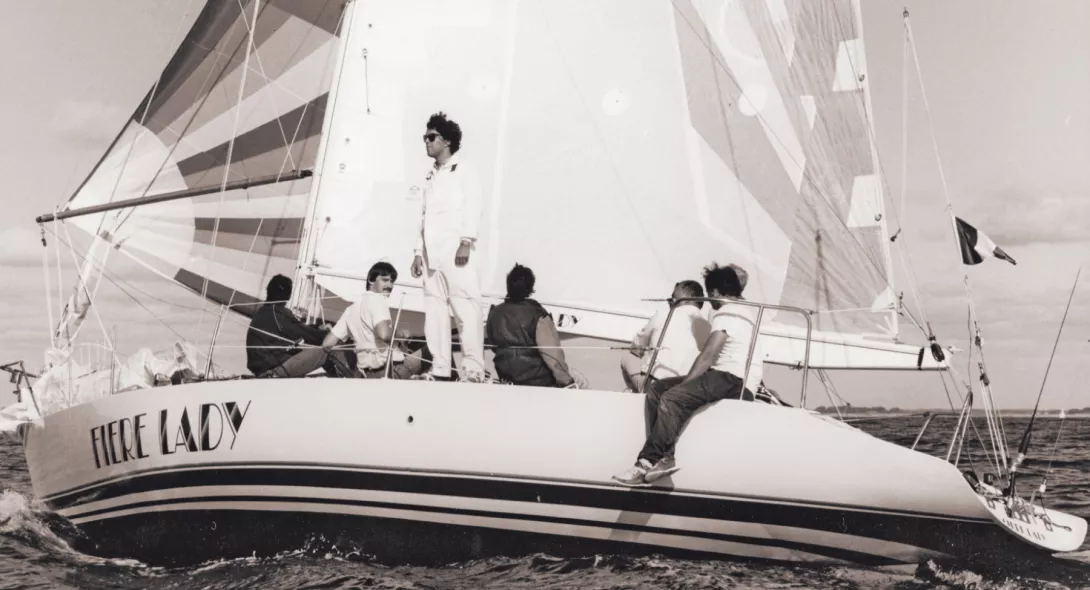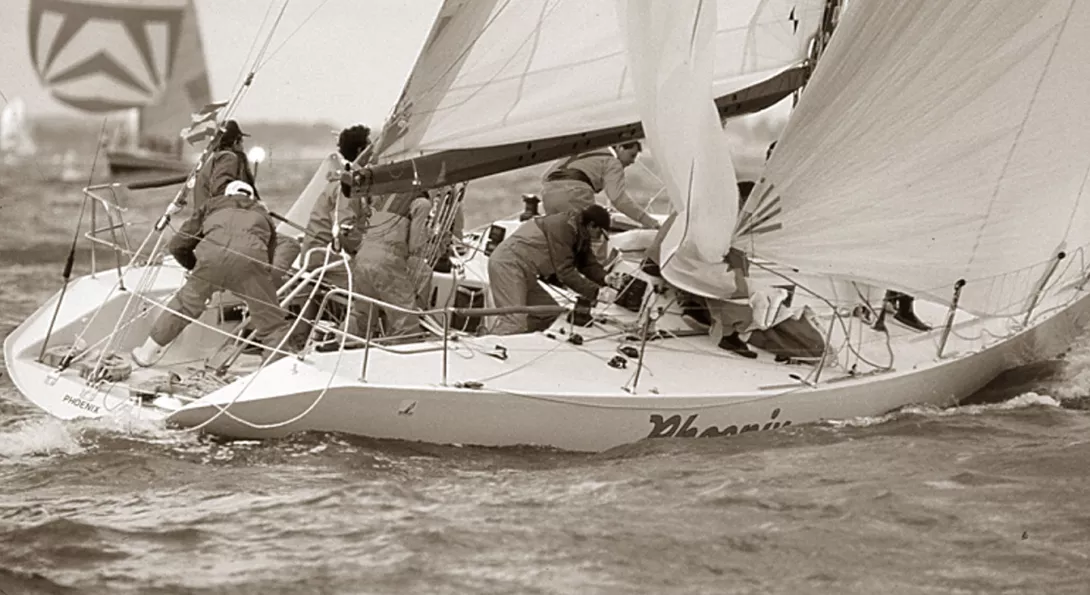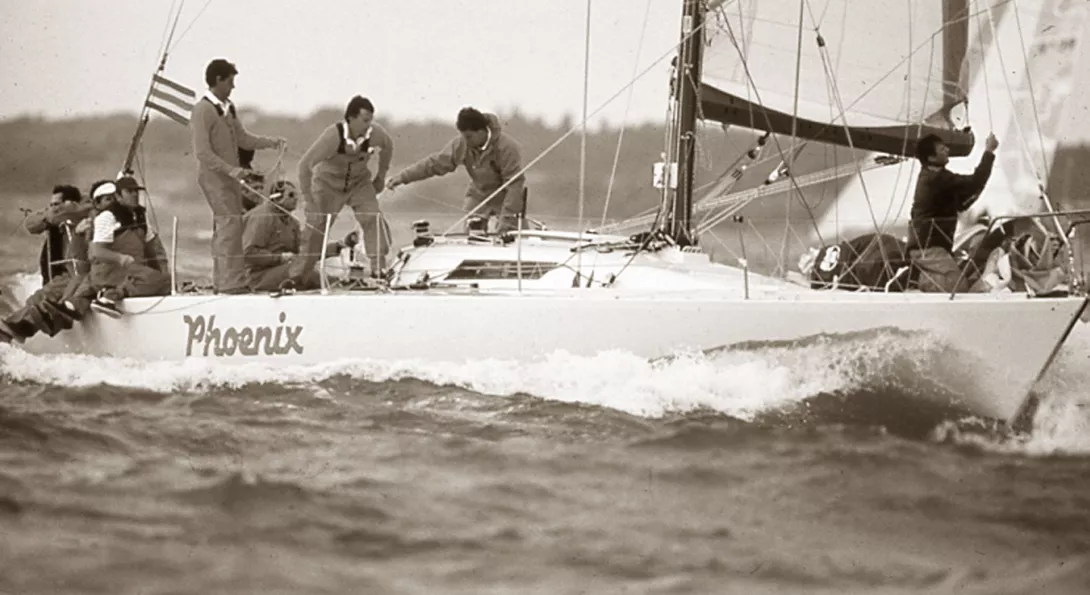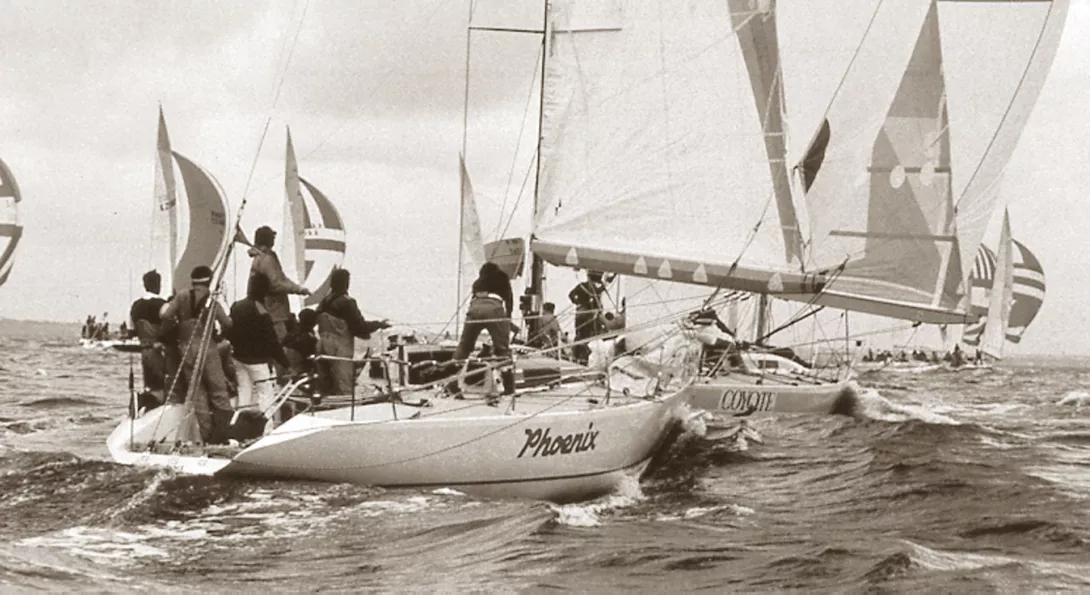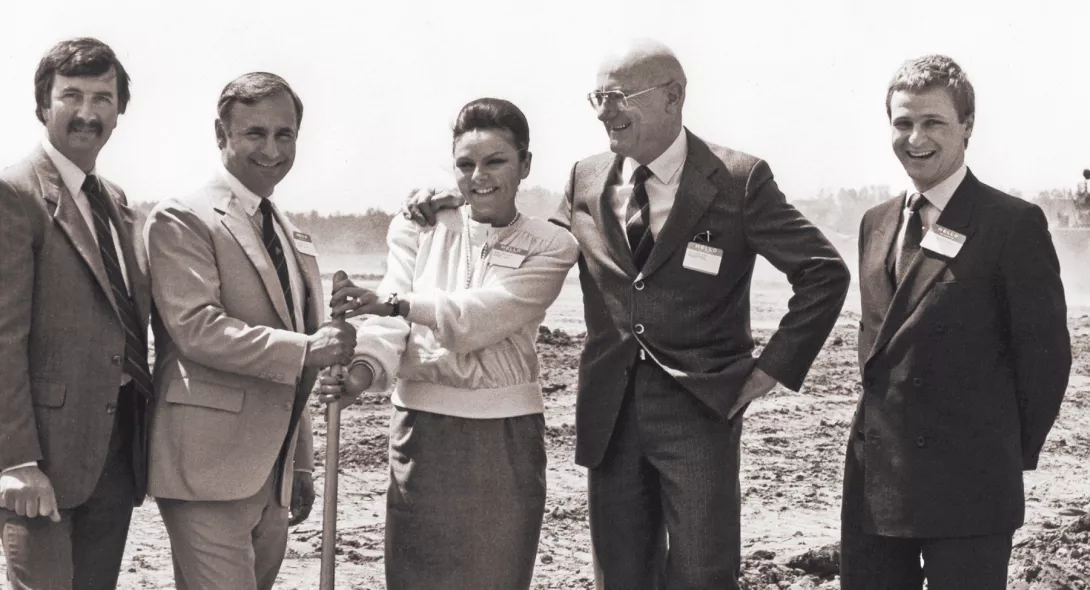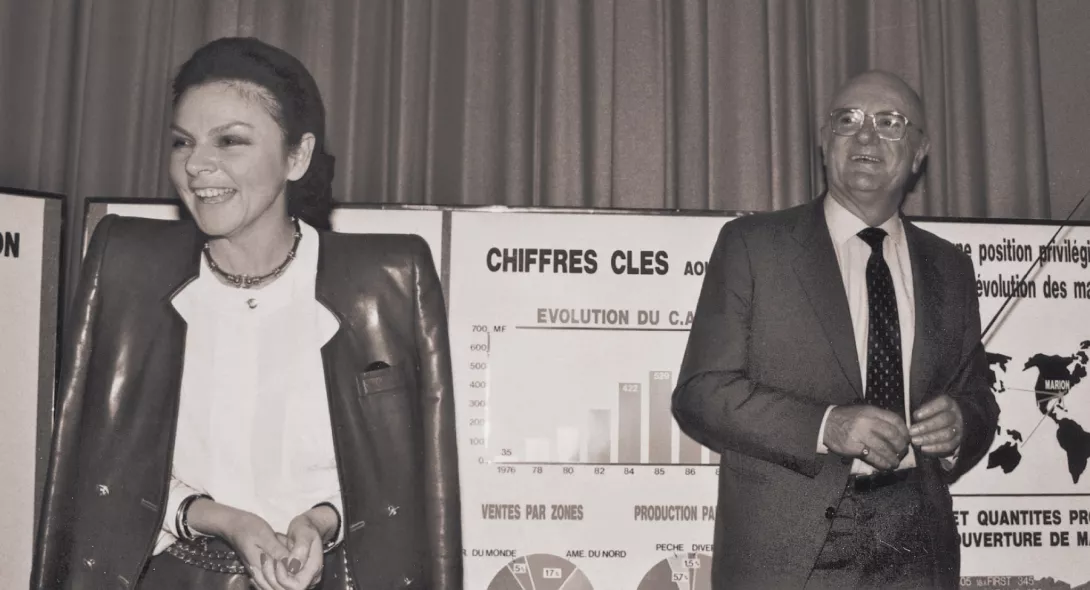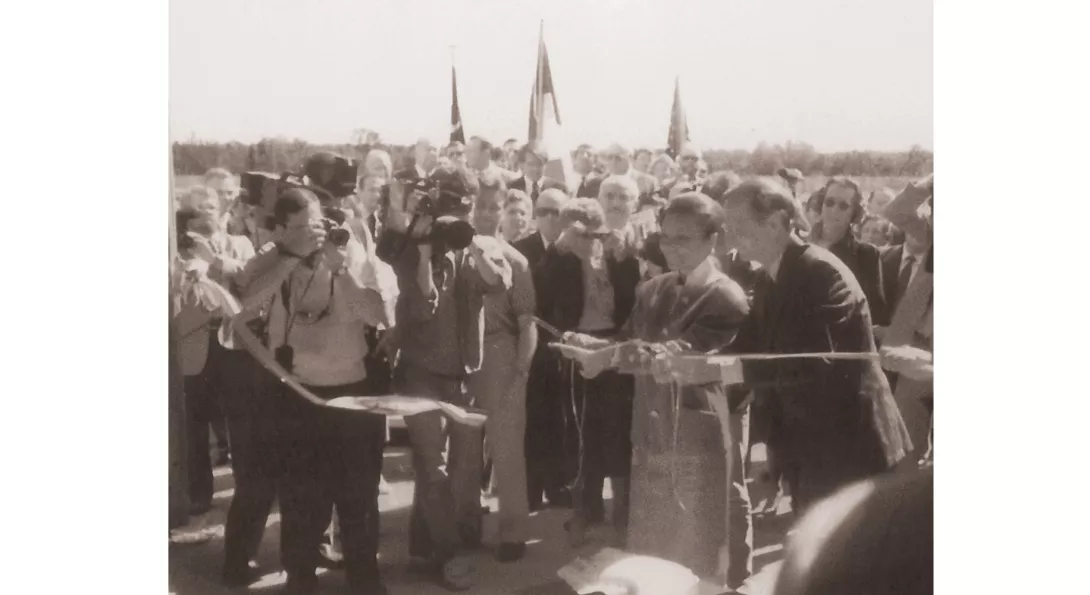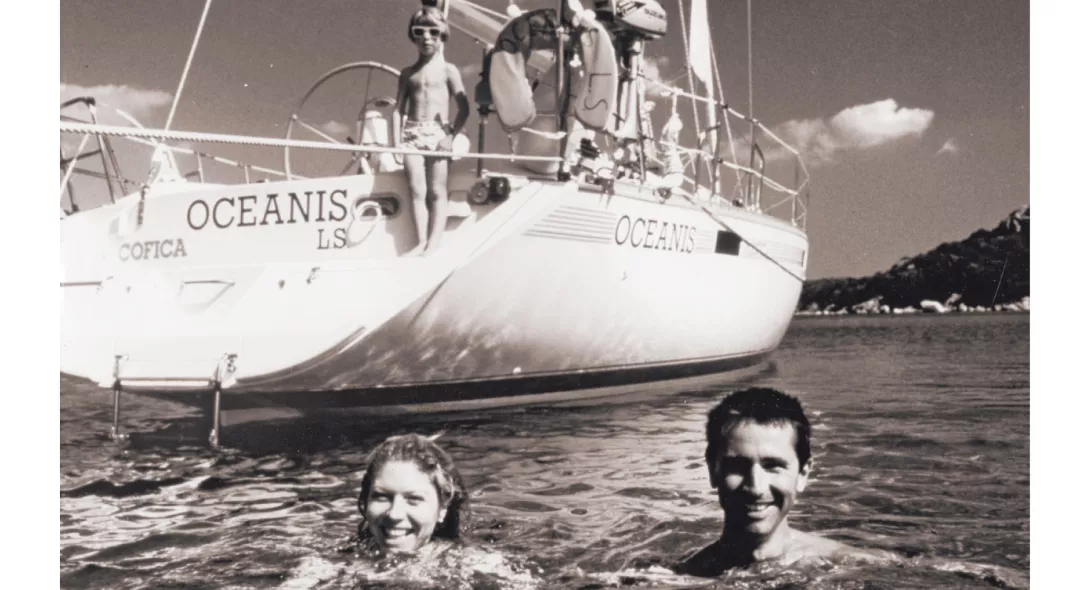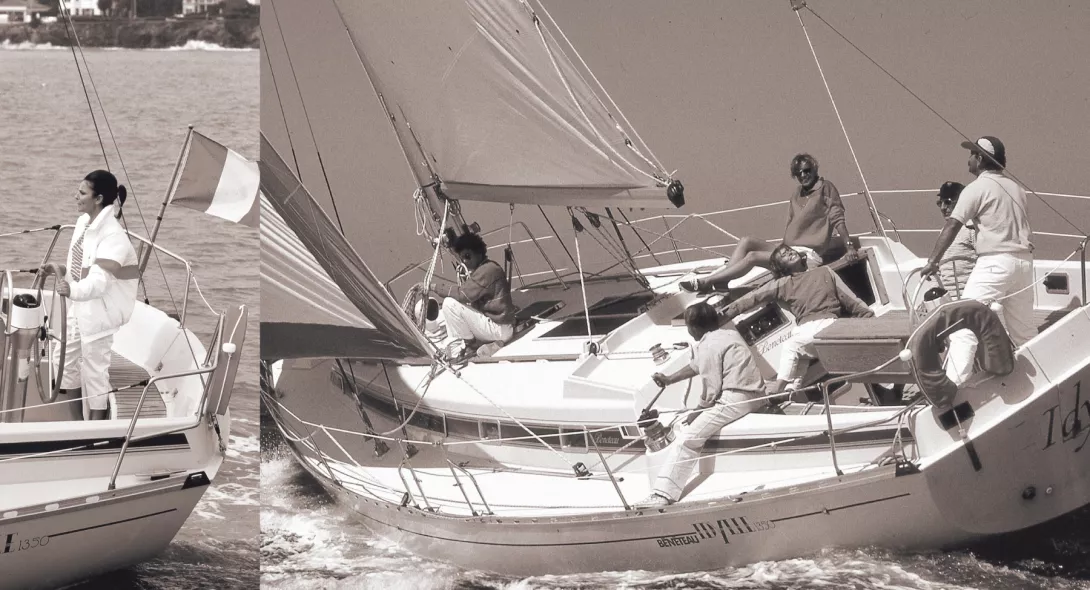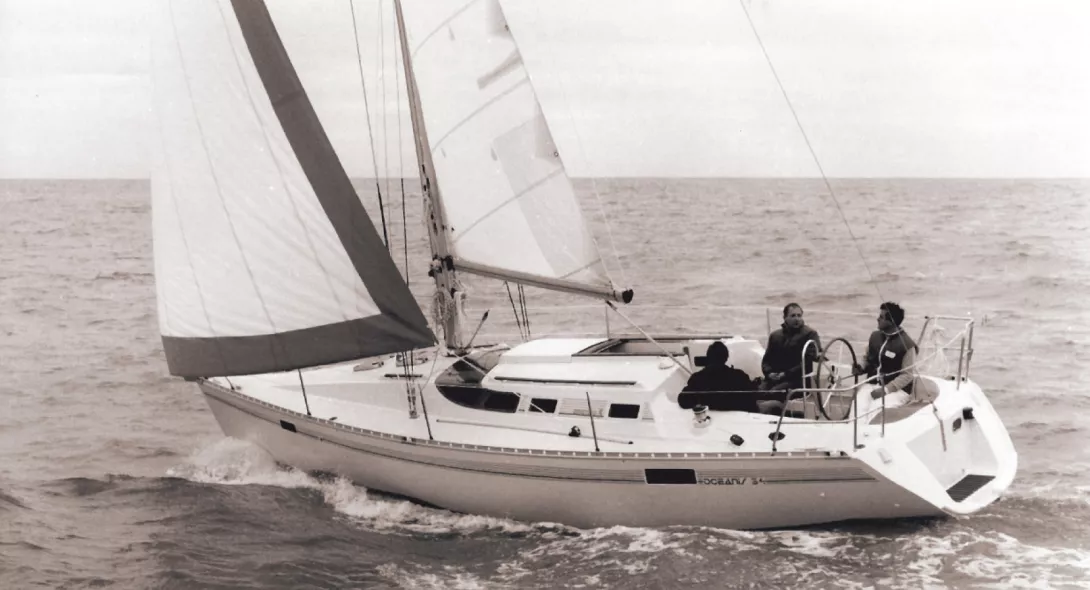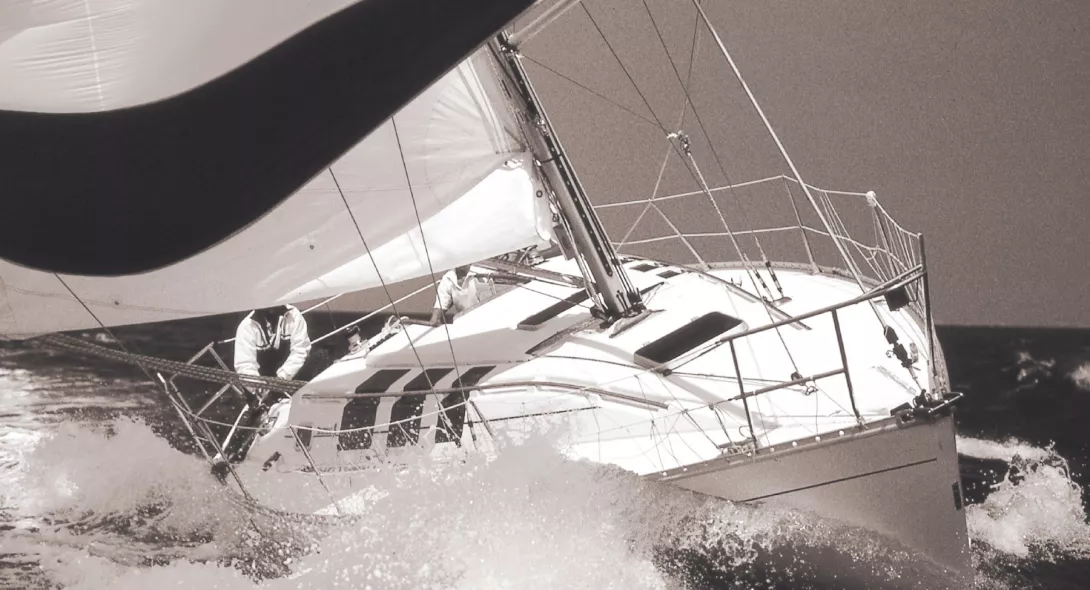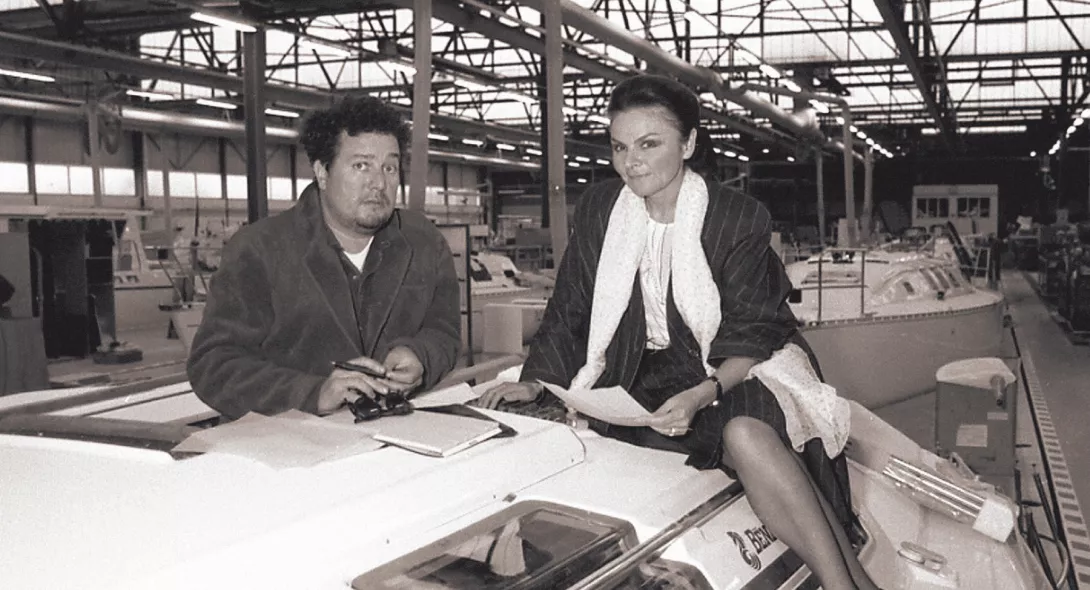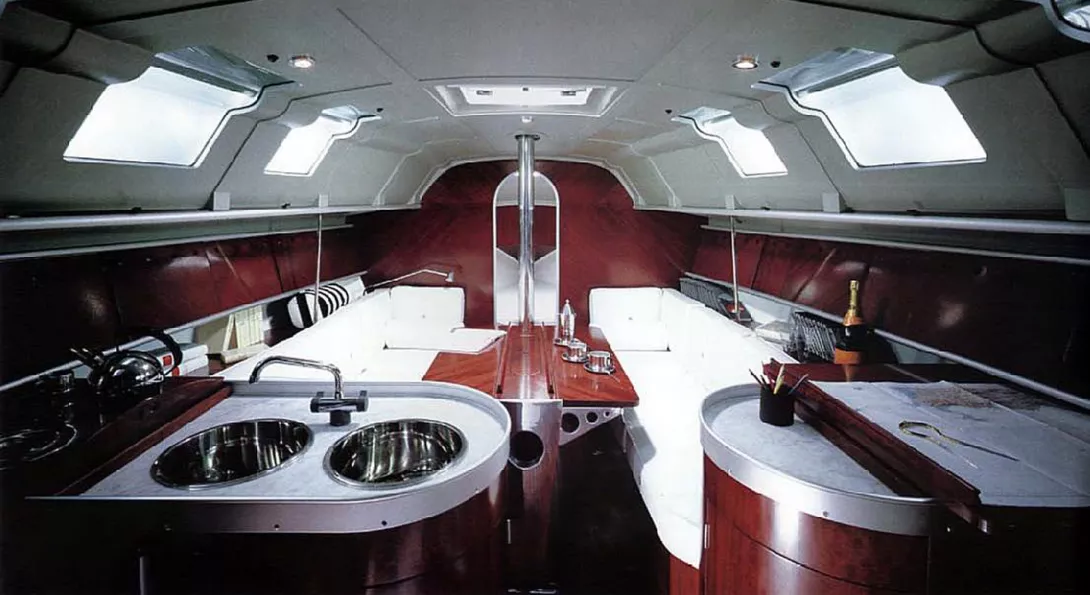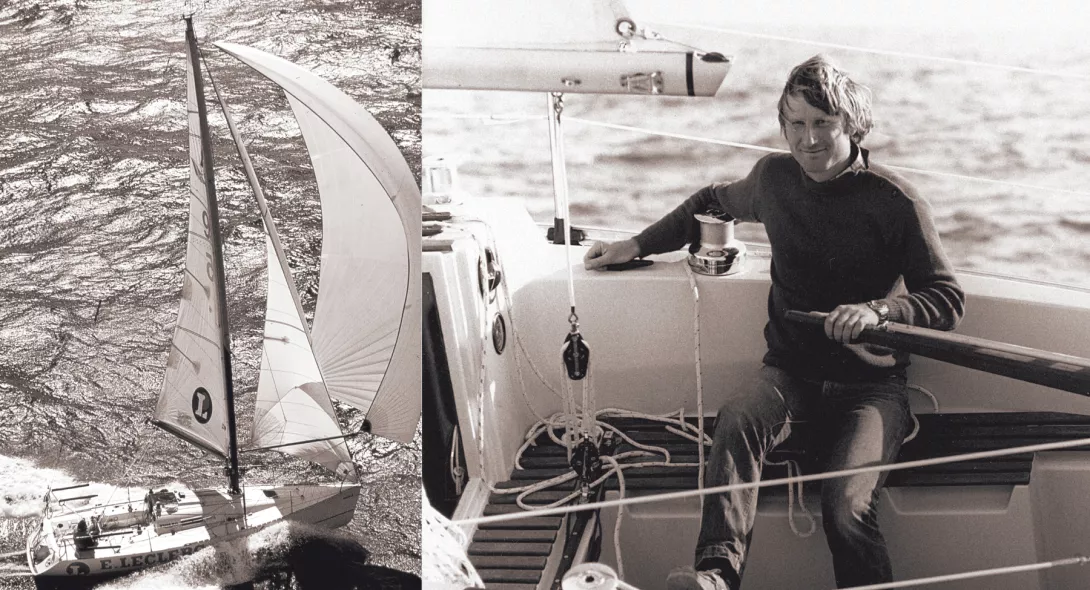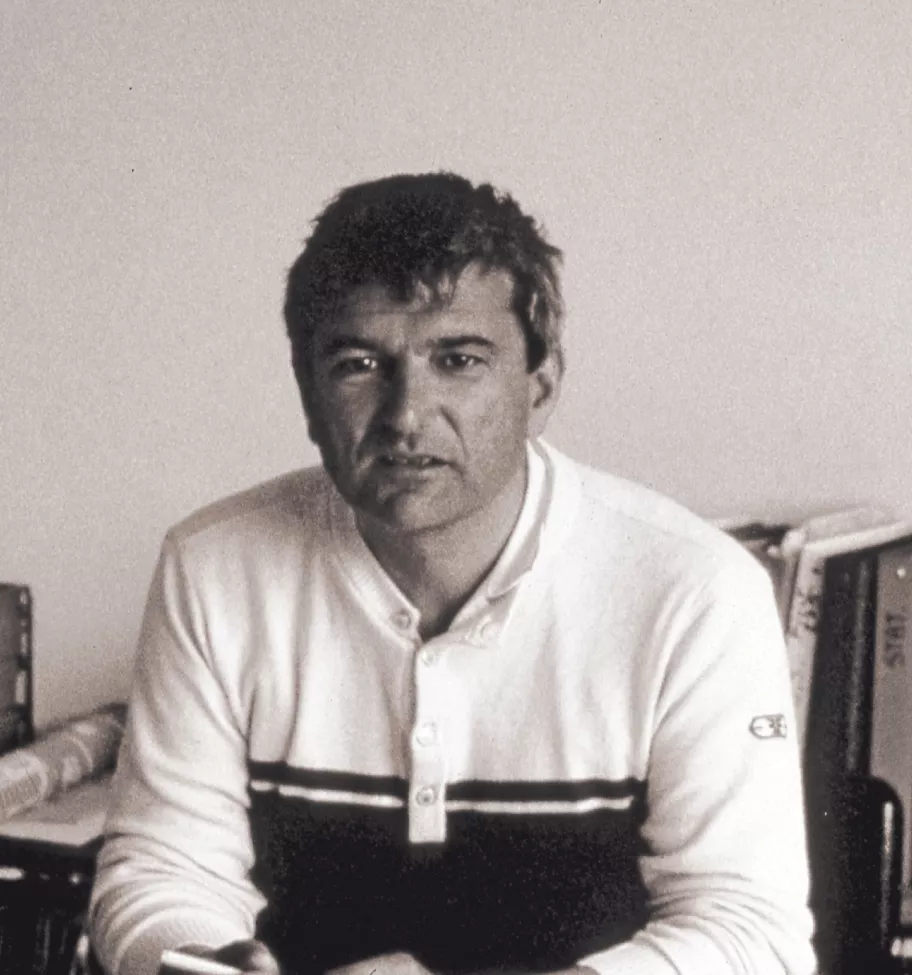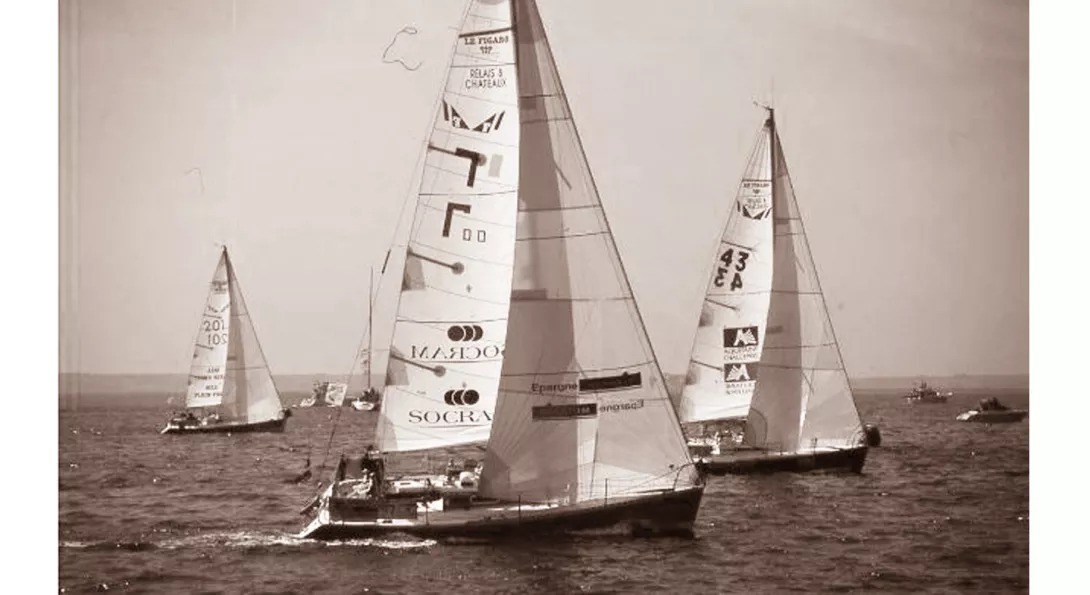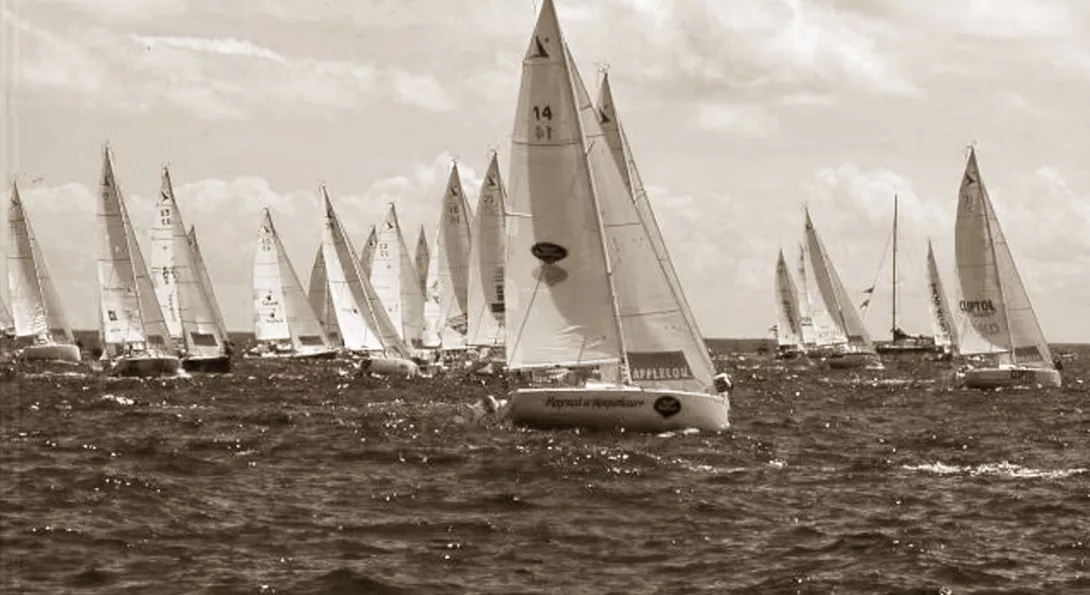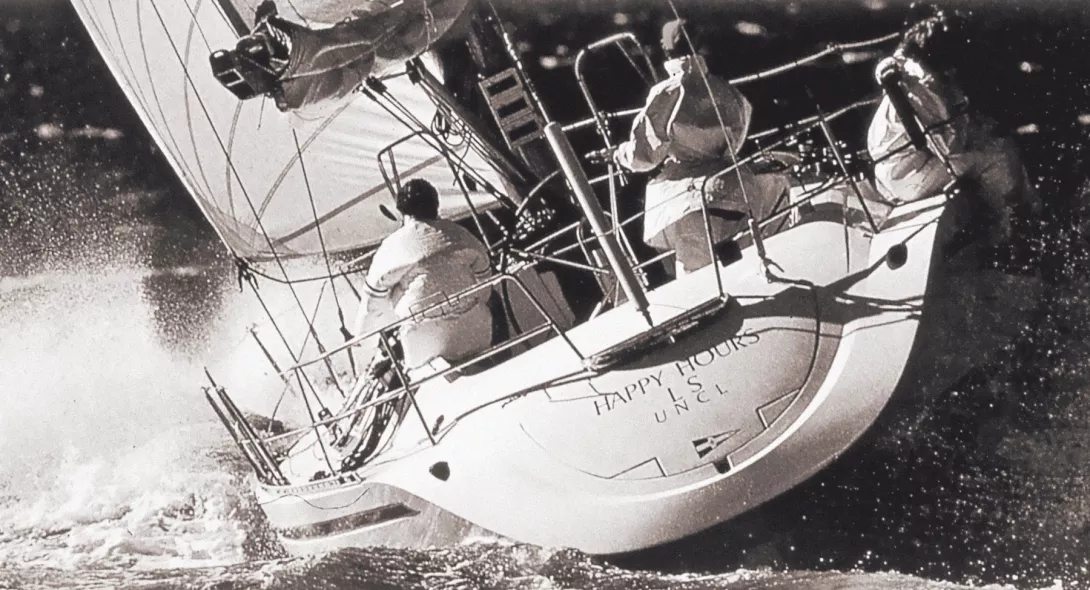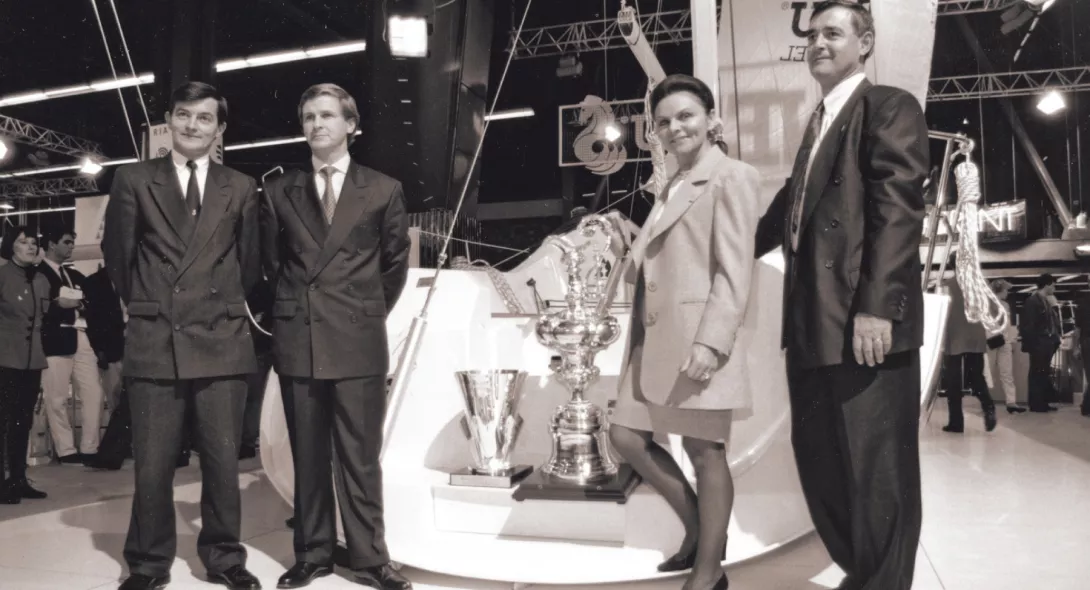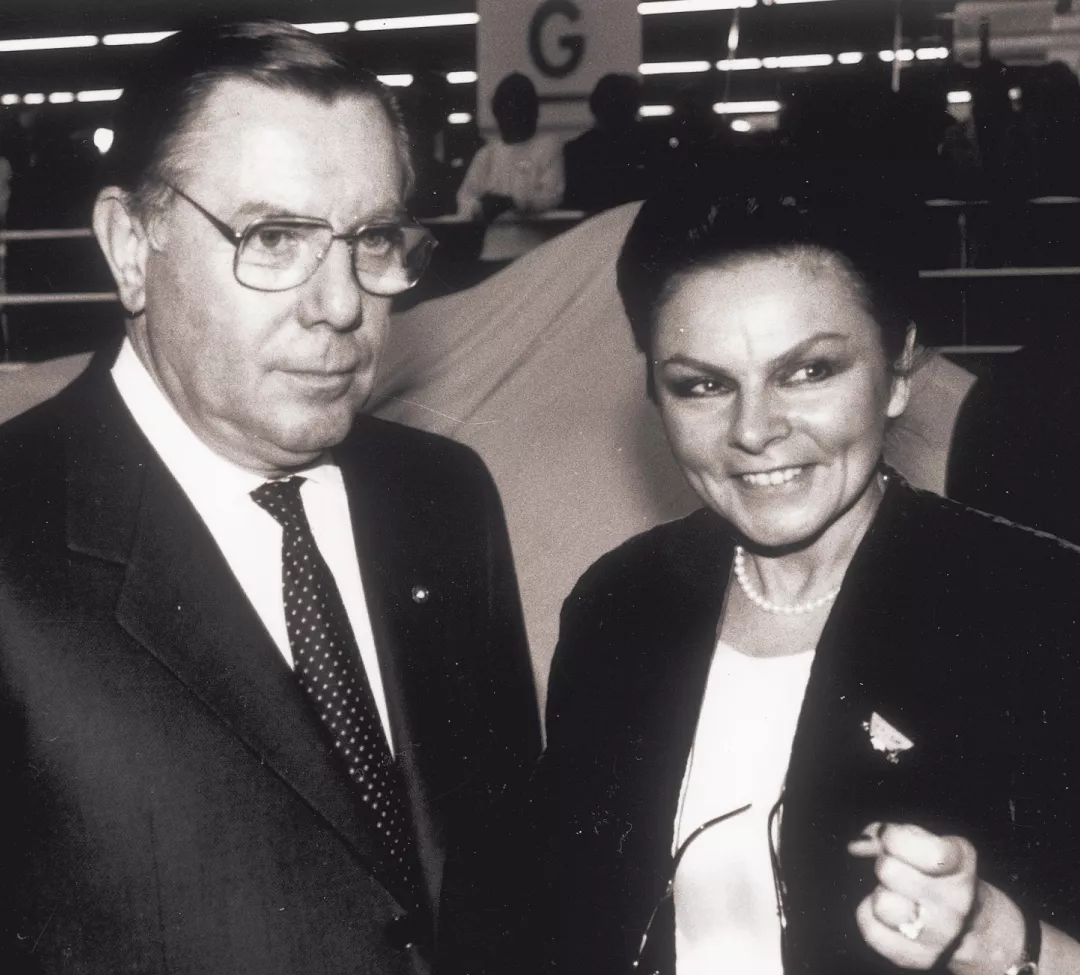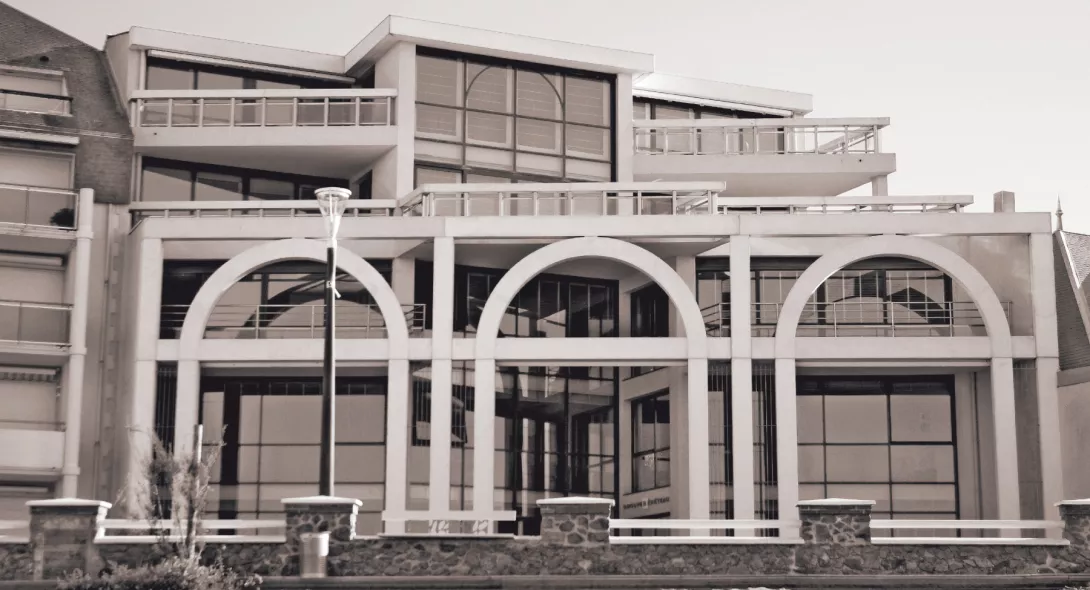« The fate of Benjamin would be out of the ordinary. Born in St-Gilles into a large family with little means, he was adopted at the age of 6 by one of his uncles, François Houyère. A single man, he passed on his love of the sea, adventure and boats to his adoptive son. However, at the age of 12, Benjamin became ship’s boy on the lugger Eliza. His dream of building boats would begin on the boatyard of his best friend’s father. His determination would convince his uncle, and he would enter Rochefort towards end 1879 for his military service.

History
“I believe we are one of the oldest boat building yards in the world to be run by the family as a majority.”
Annette ROUX
1884
1928
OUR PARENTS
Then the Great War intervened. The boatyard would get underway again in 1928, orphaned of his mother and father, and the time had come for André Bénéteau, only son of Benjamin, then aged 21, to take over.
Benjamin’s absence was experienced by the inhabitants of St-Gilles-Croix-de-Vie as the end of the Boatyard. Admittedly, our father probably did not have his force of character, being rather “taciturn”, as was often said of one of our greatest sailors, but father had the gift of drawing.
1962-1964
TRANSITION YEARS
I can only remember impressions of this time. All the noises dimmed, our workmen did not whistle as often, our parents kept silent, customer visits became rare and the bankman’s visits more frequent.We were experiencing the start of the end of this fine building trade, with the decline of the fishing trade.
1964
BEGINNINGS OF THE SAILING INDUSTRY
Many said we were lucky. Personally, I see the mark of fate. It was when I met the man who would later become my husband that I realized what was wrong and understood what went unsaid, as well as the gravity of the situation. I was not yet 22 and I was a woman in the 1960s. ‘Business women’ were rare occurrences, earning little recognition, even though, in traditional tradesmen’s circles, the wife was often the boss.
1965-1972
FIRST RANGE
January 1965: our first Paris boat show. For André, his wife Mimie, and myself, it was highly stressful. No other boat looked like ours and, not used to the capital, we felt like we did not belong. Yet, only a few hours after the opening, three business men introduced themselves, claiming that our boats were what their customers were looking for and that no other builder wanted to build them. One of them asked for Morbihan, the other Finistère, and the third the Côtes du Nord (now Côtes d’Armor).
1972
FIRST INVESTMENT
1972 would be a great year! With financial stability just about recovered, we were going to invest, first in the workforce, but also in our first plant, which was modest but really designed with semi-industrial production in mind.
We wanted to develop the recreational fishing boat. Our customers had learned to sail and they wanted larger boats, comfort on board, and to see the sea from the saloon.
1976
A DECISIVE YEAR
Back then, we had a considerable market share in the recreational fishing boat segment; thousands of customers sailed them, but some of them left us because they wanted to sail faster. François, a great regatta racer, dreamed of creating a high-performing sailing yacht. André wanted to draw it, but we knew that in this area there were architects with different experience. How do you bring someone to understand that, for the first time, a BENETEAU boat could be drawn by an architect from outside? Luck was with us. We were offered the moulds of L’impensable, the boat designed to win the Half Ton Cup and which kept its promise.
1980
EXPANSION
The yard’s motorboating team entrusted Cees Van Der Velden 2 with perfecting a catamaran with which he won the “PARIS 6 hours” flying BENETEAU colours. I can still see the faces of our builder colleagues and friends at the time. How could we, inexperienced ‘sailors’, win this race with a motorboat ?
This was not a problem, close on its heels the Flyer range was born and the first models were shown at the Paris Boat Show.
1981-1986
PROSPEROUS YEARS
This decade would be decisive. Of course, from the 1970s, we were investing in export insofar as our resources would permit, setting up a network of dealers and importers, in particular in European countries, with the exception of the United States, where we opened a subsidiary in Annapolis, in 1976. The aim of this was to establish our brand, but especially to understand the American consumer’s tastes by being present on site.
1989
BEGINNING OF FIGARO YEARS
Always mindful of promoting sailing, this would be the year of the first Figaro Class.
The Figaro race - formerly the Course de l’Aurore – traditionally raced on prototypes was to convert to one-designs. We could not be absent from this race, which we had been following since the First was marketed, a race which Michel Malinovsky won the day the boat was produced, bringing it such a great reputation.
1990
CREATIVITY
As the first world economic crisis to hit the sailing industry was looming, we continued our creative research on the First. A meeting at the Paris Boat Show with a loyal Italian customer would draw our attention. This customer, a great designer with Pininfarina, told us he “could no longer dream” since all boats looked alike. He talked of shapes that had changed, particularly in the car industry, and found our decks too angular.
1991-2001
STANDING TOGETHER IN CRISIS, REMEMBERING AND GROWING
In 1991, in the context of a general economic crisis, competitors all over the world found themselves on equal terms. How do you manage a crisis when you have no markers? Some would manage it mathematically, but leaving their companies leaderless, some would manage things on a more human scale, braving criticism and scepticism, others would not cope at all.
We succeeded in surmounting this ordeal, since we stood together. We trusted our staff and knowing their common sense, we knew we could count on them. No matter how difficult these phases, they are a time for questioning, raising awareness, and reorganization.
2003-2014
ENSURING CONTINUITY, BEYOND THE FATE OF MEN
It was during the crisis that the scale of the business developed. BENETEAU Boatyard became BENETEAU Group. Then came the question of where we would locate our headquarters. It would be at St-Gilles-Croix-de-Vie, facing the harbor entrance, when we bought the restaurant, Les Embruns. It was the place where so much of our business had been done and where, facing the piers, our father took us as children to witness the launch of his last trawler, not hesitating to criticize his own work, before leading us off to his office, where he would change his plan for the next boat.
2004. Everything was going well. Our development was spectacular. We were building new factories and renovating the existing production plants with the Béri design office under the leadership of Yvon Bénéteau. We were increasing our market share, but we were no longer a small family-run company. As for me, forty years had flown by, life had taught me much about the problems connected with succession and my responsibility would be to anticipate the future, particularly in this area.













